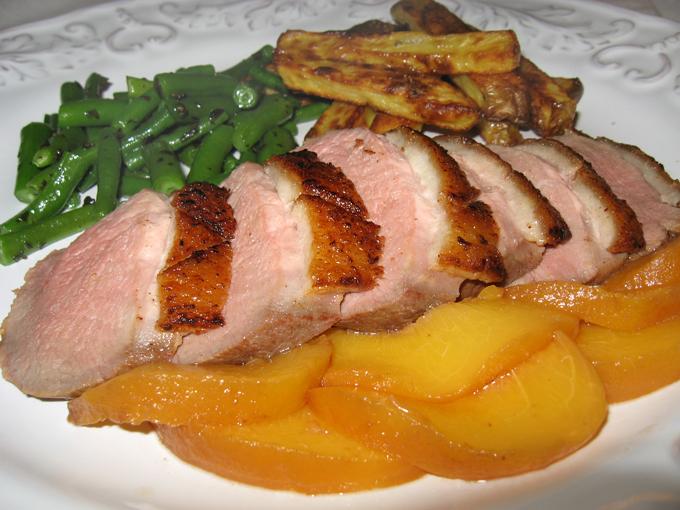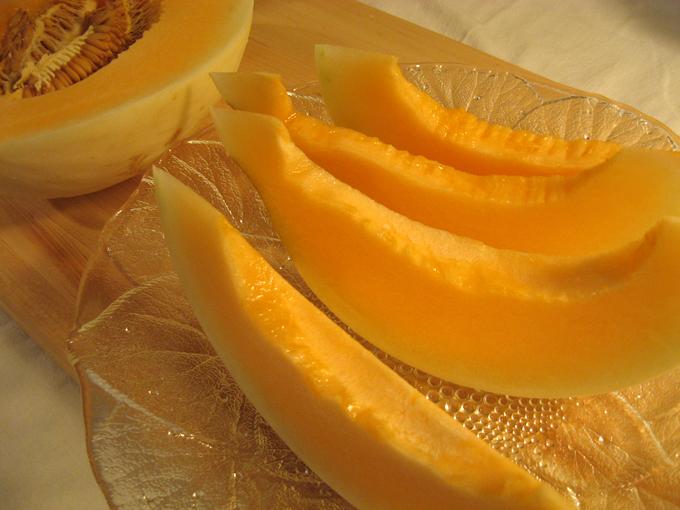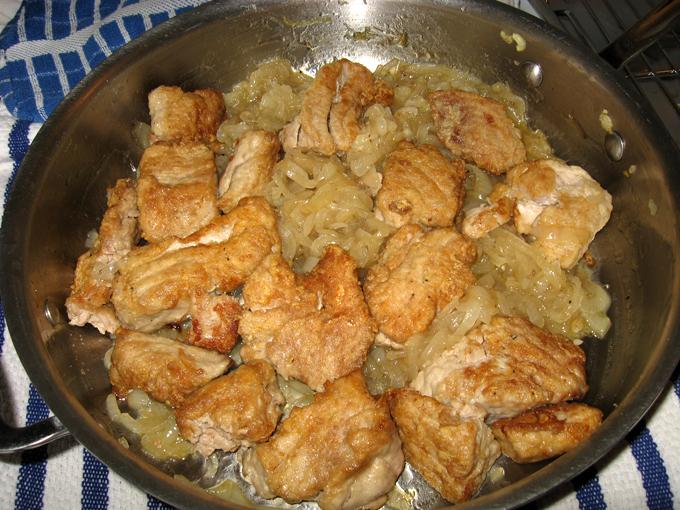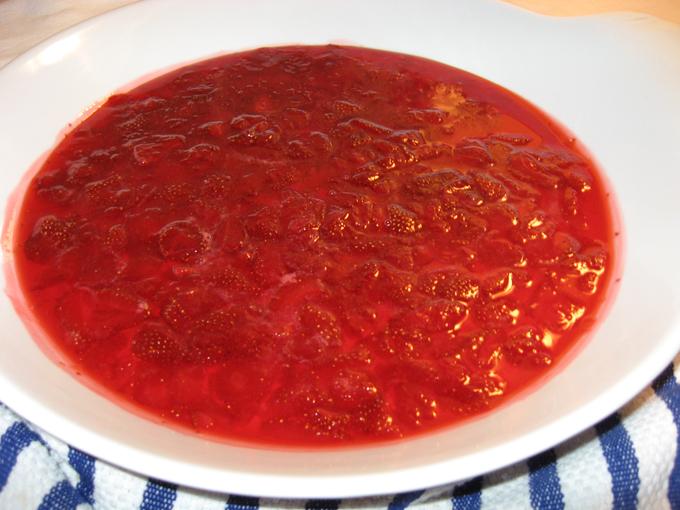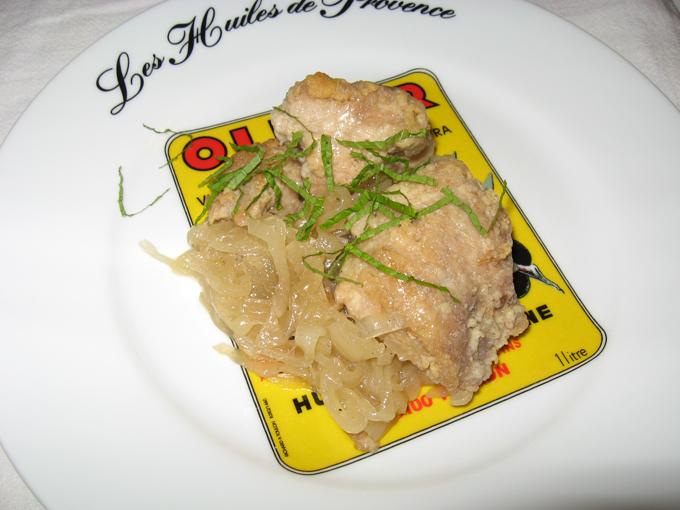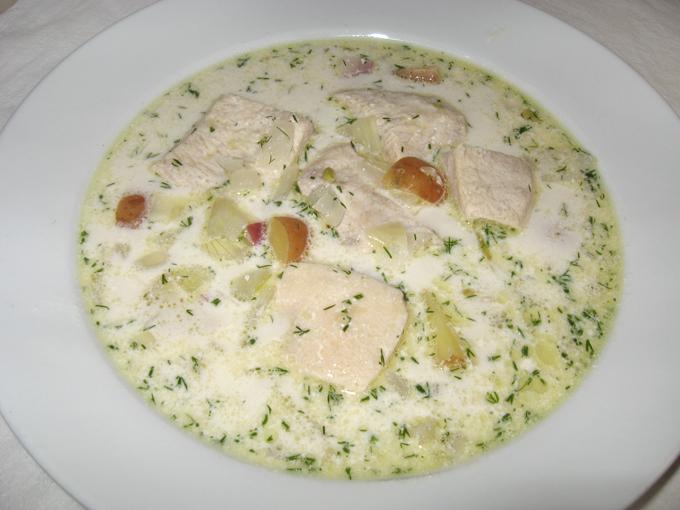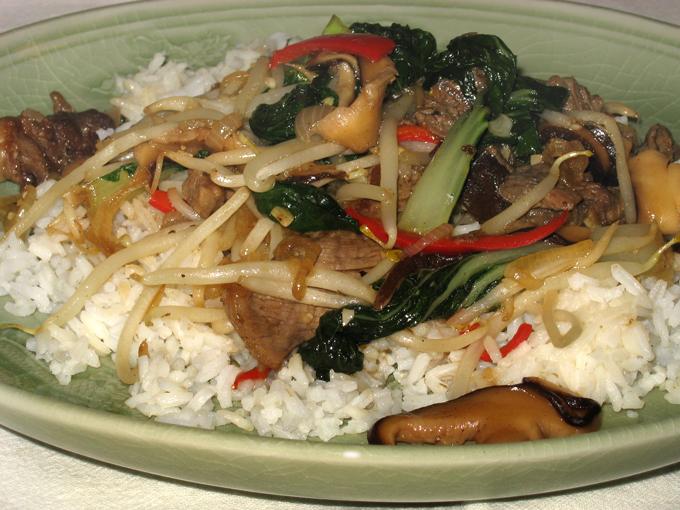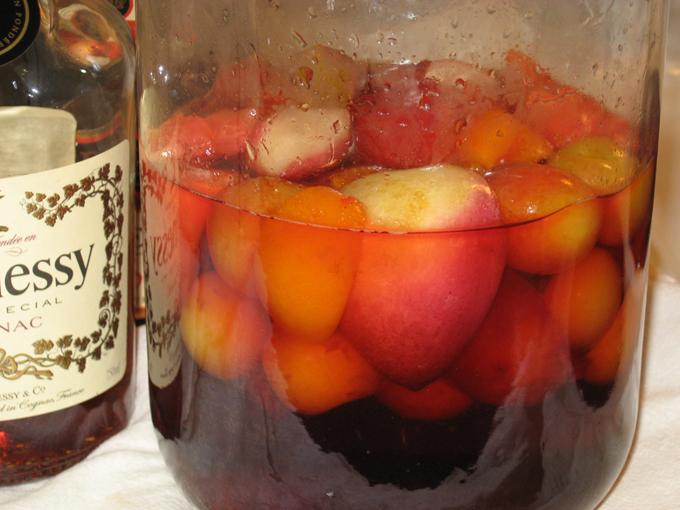-
Posts
1,729 -
Joined
-
Last visited
Content Type
Profiles
Forums
Store
Help Articles
Everything posted by djyee100
-
I cook a Thai-style stirfried broccoli with oyster sauce from Kasma Loha-Unchit. An adapted version of the recipe is here: http://www.food.com/recipe/stir-fried-broccoli-with-thai-oyster-sauce-236965 I like to sear some steak strips, remove them from the pan, then cook the broccoli. Towards the end of cooking time, I return the meat to the pan and let it cook with the vegs. I serve this stirfry over steamed rice. It's an easy dinner. I also like that Chinese-American standby, beef with broccoli in a garlic, ginger, soy sauce. Another broccoli recipe for dinner, from the Mediterranean, Judy Rodgers' recipe for Pasta with Spicy Broccoli & Cauliflower in the Zuni Cafe Cookbook. You can make this dish with all broccoli, all cauliflower, or a combo. I like this dish in the winter, when broccoli and cauliflower, along with winter greens, are the best-looking vegs in the market. An adapted recipe is here: http://www.thestar.com/living/food/recipes/article/572369--pasta-with-spicy-broccoli-cauliflower I also like broccoli as a pizza topping, with sausage and tomato sauce. To make the pizza: Blanche some broccoli florets, drain well, and chop into 1/2" pieces. Toss with garlic oil. On a round of pizza dough, spread on some tomato sauce, then top with crumbled Italian sausage (casings removed) and the broccoli pieces. Sprinkle on some shredded mozzarella and grated pecorino romano. Bake. This makes a hearty dinner pizza. I used to make a broccoli casserole from the Moosewood Cookbook. I brought it to potlucks, and people liked it. Chris? Chris? Are you still there? This is my version of Broccoli Mushroom Noodle Casserole: Heat some butter in a skillet and saute 2 stalks of broccoli with florets, cut up; 1 lb sliced mushrooms; 1 large onion, chopped. Season well with S&P. When the vegs are tender, remove from the heat & toss with 1/4 cup dry white wine; set aside. While the vegs are cooking, combine 3 eggs with 3 cups ricotta or cottage cheese (or combo) and 1 cup sour cream in a large bowl; set aside. Boil 3 cups of egg noodles in salted water until slightly underdone. Drain well and butter. With a slotted spoon remove the vegs from the pan. Combine the vegs, egg mixture, and noodles. Spread the mixture in a 9X13 baking dish. Top with breadcrumbs, and if desired, 1/4 cup of grated sharp cheddar, Asiago, or parmesan. Cover and bake in a 350 degree oven for 30 mins, then uncovered for 15 more mins, until the casserole is cooked through. Really, people liked it.
-

Anyone have a 1978 or 1986 edition of the Betty Crocker Cookbook?
djyee100 replied to a topic in Cookbooks & References
I checked the index. No entry for "hamburger cookies" under "hamburger" or "cookies." Betty Crocker's Cookbook For Boys & Girls was published for decades in different editions. If you get a list of all the editions and check them out (try the reference librarian at your public library), you may find the cookbook you're looking for. -

Anyone have a 1978 or 1986 edition of the Betty Crocker Cookbook?
djyee100 replied to a topic in Cookbooks & References
On a whim I looked at Betty Crocker's Cookbook For Boys & Girls, 1975 edition, at the public library. There's a pic of the Monopoly playing board, with the Go space, on page 115. Your public library must have a different edition. Other info about the 1975 edition: On the cover is a pic of kids eating squares of chocolate cake. Published by Golden Press, NY, NY; printed by Western Publishing Company, Racine, Wisconsin; Library of Congress Catalog Card Number 74-23006. Your public library may be able to find this book on interlibrary loan. Or you could try buying it on Abebooks. -
You're messing with all of us. I have never seen bacon curled up like that, like flower petals or a bowl. Fabulous presentation. So tell us how... (Kim, love the cannelloni.)
-
My Vieux Garcon has a few bubbles if I shake it, but not a lot since I use a large jar with a rubber gasket--the gases release gradually. As for fermentation and flavor, VG tastes like brandied fruit to me. Anybody else make VG or rumtopf? My fruits have absorbed sugar by now and they are settling down towards the bottom of the jar. How are yours doing?
-
It's a recipe for the Stepford Children.
-
The USDA puts out extensive information on home canning, here: http://www.uga.edu/nchfp/publications/publications_usda.html I haven't looked at the materials in years, but way back when the manual gave info on testing for proper ph in canned foods. Each food will have different requirements, and possibly even a different processing method (e.g., pressure canning). I totally agree with Runwestierun. Home canning is a science, and not a place to experiment if you are new to canning. The master canners I know, people who have canned meat, veg & fruits for 20+ years, have extensive experience with established recipes and understand the process very well. Even then, they often use reliable recipes--there are so many canning recipes and canning cookbooks out there that might suit you. edited to add: If interested, you could check out the canning classes given by USDA Extension, either online or in-person at various Extension centers throughout the US. The classes are available for free or for a nominal fee. Try Googling "usda extension canning classes."
-
Prawncrackers, all the food looks fantastic. I'll have to try your idea of salted duck eggs with avocado. Kim, a great steak dinner. Lucky Mr. Kim! Robirdstx, I like those Asian-inspired grilled pork chops. Tonight's dinner, Grilled Cured Duck Breast with Pickled Peaches, from Alice Waters' Chez Panisse Fruit. The duck breasts are cured for a couple days in a salt-sugar brine with bay leaf, black peppercorns, whole clove, allspice berries, & small chili peppers. The duck breasts are supposed to cook on an outdoor grill, but that wasn't going to happen today. I pan-grilled the breasts over medium heat for about 10 mins, regularly pouring off the rendered duck fat, until they were well-browned. Then I finished them in a 450 degree oven for 5 mins. The duck breasts resting after cooking, and the pickled peaches warmed up in some of their liquid. Served with oven fries made from Yukon Gold potatoes, and cooked green beans tossed with olive oil, salt, & fresh marjoram. A dessert of chilled sweet melon slices. The melon was from my CSA. The pickled peaches were tart & cinnamon-y, and tasted just right with the cured duck breast. The recipe for the Pickled Peaches is here: http://www.pbs.org/wgbh/victorygarden/eat/recipes/peaches.html
-
I'm unfamiliar with this product. I suggest that you defrost & heat up a few mussels, if you can, & taste them. That should give you ideas about what to do with them. Also, if the mussels don't taste good, why bother doing anything with them? Off the top of my head, you could put cooked mussels into a tomato or cream pasta sauce--add them at the last minute so they only heat up. I've never tried pickled mussels, but that might be a good application for these frozen mussels--the brine and flavorings will help if the mussels are bland. A recipe is on this blog. You could probably substitute canned clam juice for the mussel juice. http://ernielb.blogspot.com/2007/12/mussel-feed-recipe.html
-
I've had this question as well, although I've always cooked Vieux Garcon per the recipe. I contacted Georgeanne Brennan, the author of the recipe, with this question. This was her response by email: So I emailed Harold McGee, and this was his reply: Flavor preference makes sense to me, especially if people use cheap brandy to make Vieux Garcon. Burning off some of the alcohol makes the fruit and syrup more palatable. Also, just my guess, I think cooking the fruit helps keep its shape and color. If I remember correctly, someone who made rumtopf had problems with the fruit disintegrating and turning a grayish color. As for the keeping qualities of Vieux Garcon, even with some of the alcohol burned off, the preserve keeps well for the time stated in the recipe. The substantial amt of sugar in the recipe is a preservative as well. Edited To Add: You're not thinking of botulism, are you? This preserve is not sealed or canned to create the anaerobic conditions necessary for botulism. At worst, the preserve might mold and smell, and you will throw it out. With the amts of brandy and sugar in this mix, I've never known that to happen.
-

Anyone have a 1978 or 1986 edition of the Betty Crocker Cookbook?
djyee100 replied to a topic in Cookbooks & References
Abebooks, a consortium of used book sellers, lists Betty Crocker's Cookbook for Boys and Girls, dated 1978. http://www.abebooks.com/ Googlebooks has a pic of the cover, here. Look familiar? http://books.google.com/books?id=bB0JAAAACAAJ&dq=BETTY+CROCKER%27S+COOKBOOK+FOR+BOYS+%26+GIRLS&hl=en&ei=4phpTN3ID464sQOIl9GMBw&sa=X&oi=book_result&ct=result&resnum=1&ved=0CDcQ6AEwAA If you want to do a further search on Abebooks, I suggest you first search for "Betty Crocker Cookbook." When the results pop up, do a second search within the results for whatever year (or other keywords) that might help. For any book that you think might be IT, you can query the vendor about the "Go" Monopoly pic before you buy the book. Many of the vendors are small sellers & they will answer questions prior to a sale. -
If I understand correctly, the Fair Food watermelon's only distinctive characteristic, compared to a melon in a typical supermarket, is that the FF melon is locally grown (within 150 mile radius or less?) as opposed to being picked less ripe & trucked from California, Florida, or another farflung state. It is not organic, correct? Compared to conventional produce, organic produce can require more work in farming (e.g., hand-hoeing for weeds with some crops), with a more limited production overall. The organic farms I know of are all owner-operated small farms. Certified organic produce is usually triple the cost of conventional produce, even here in California. However, I do believe that catering to an affluent, urban market ups the price, too. If the FF melon is only locally grown, not organic, then I wonder what the justification is for that price on the production side. Obviously there are economies of scale for the out-of-state mega-farms, but that much? The reason for the high price may lie in what FF believes someone is willing to pay for a (hopefully) great-tasting watermelon that fulfills the ideal of being "locally grown." (Note: Nature is so variable that the same field can produce fruits of wildly different quality. At times I've tasted conventional produce that beats out comparable organic produce, and vice versa. Depending on how the weather has been here, I've also tasted produce from Mexico, Florida, or Arizona that beats out stuff that's grown a one-hour drive from where I live. So go figure.) As for the issue mentioned in the Salon article, many years ago (if I remember correctly), 4 or 5 pioneering organic farms in a valley north of here received complaints from local townspeople that the produce was being shipped to Sacramento and the SF Bay Area, bypassing the nearest towns. The farms got together and started a weekend farmers market in one of the towns, and that ended the complaints. Of course, this is organic produce, so the locals probably experienced sticker shock at the prices (like the rest of us).
-
dcarch, a wonderful lobster presentation. Did you carve away the shell with knife or scissors? Any tips on how you did this?
-
I'll vote that it's a pith problem, too. It may be that the pith of Meyer lemons is especially bitter compared to other citrus. Awhile back, when I had some Meyer lemons, I was checking out recipes in Lindsey Shere's Chez Panisse Desserts. In the recipes for Meyer lemon ice cream and sherbet, Shere is careful to say the pith of Meyer lemons is "very bitter," and shouldn't be included in the preparation.
-
A gorgeous melange of vegetables, SobaAddict. The upcoming panzanella sounds good, too. Yesterday at the fish market, chunks of ahi tuna and swordfish on sale, so I bought a bunch to play with. The tuna went into Tuna with Sweet-and-Sour Onions, from Paula Wolfert's Mediterranean Clay Pot Cooking. The tuna pieces are dredged in seasoned flour, pan-fried, then combined with sweet & sour caramelized onions. The mixture is chilled so that the flavors meld, and it's served cold. The dish does taste better that way. But I can attest that crispy pieces of tuna with those onions, eaten warm out of the pan, taste very good too. An appetizer, served chilled, with a garnish of fresh mint. The recipe is available on Googlebooks. I started with step 2, caramelizing the onions in a conventional skillet, and I reduced the amt of tuna to 1 1/2 lbs. On Page 59: http://books.google.com/books?id=DwtbDDGaQcIC&pg=PA59&lpg=PA59&dq=wolfert+tuna+with+sweet+sour+onions&source=bl&ots=qlyIQD-VyU&sig=hzz1s-KmKymjgZonQkXk1JdmcYQ&hl=en&ei=zFNiTNSZAYjksQPfsrShCA&sa=X&oi=book_result&ct=result&resnum=1&ved=0CBIQ6AEwAA#v=onepage&q&f=false For today's dinner I cooked the swordfish pieces in a Swordfish Chowder with onions, fennel, potatoes, dill, white wine, & cream. This is not a summer-y dish. But we're having unseasonably cool weather here, wearing jackets during the day and covering up with blankets at night, and this chowder hit the spot. To make Swordfish Chowder: In a soup pot, heat 1 TB butter and 1 TB olive oil. Add in 2 medium-size onions, diced; 1 small fennel bulb, trimmed & diced; 2 whole cloves; generous pinch of fennel seed, crushed; 1 bay leaf; salt. Saute over moderate heat until the vegs are softened and translucent. Add in 2 medium-size potatoes, diced; 1/2 cup dry white wine; and approx 2 cups of water, enough to cover the vegs. Bring to a simmer. Cover and cook until the potatoes are tender and cooked through, about 10 mins. Add in 1 1/2 lbs swordfish, cut into chunks; 1 TB freshly chopped dill; and more water if necessary. Simmer until the fish is cooked; this may take only five mins or so, so keep checking the fish for doneness. Stir in 1 cup Half & Half. Taste and adjust for salt. Remove the cloves and bay leaf. Heat the soup until it is very hot, but avoid boiling. Serve immediately with crusty bread. I've cooked this chowder with other kinds of lean white fish, but I do like swordfish best. For dessert, a syrupy Sun-Dried Strawberry Jam that needs warm weather to thicken properly. Just kidding. Actually, dessert was fresh peaches. I cooked this jam last night. Sliced strawberries and sugar are boiled together briefly, then the jam is spread onto a large platter (to no more than 1/2" thickness), and allowed to dry. The evaporation thickens the jam. Kidding aside, even with the cool weather, this jam has dried out and thickened enough over 24 hrs that I will pack it in a jar for the fridge tonight. It's the easiest jam I've ever made, and the flavor is fabulous. I followed the recipe in Alice Waters' Chez Panisse Fruit. This blog has an adapted recipe: http://mixedgreensblog.com/2009/06/29/seasons-eatings/preserve-it-sun-dried-jam/
-
It is my understanding that the taste of umami means the savory edge in certain foods: mushrooms or soy sauce, for example. I think all aged cheeses have that savory taste, some fresh cheeses too. So by that definition pecorino romano would have umami, as well as parmigiano-reggiano. That's a good question. The two cheeses have markedly different flavors when you're tasting the imported, high-end products. I'm guessing that if the recipe author assumes people are using the less expensive domestic versions of these cheeses, the differences are less noticeable. In fact, the flavor for these cheeses, depending on the quality of what one is buying, may just be salty--good for seasoning, whichever cheese someone is using. Sheep's milk cheeses have a zinginess to them that cow's milk cheeses do not. A cheese maniac I know describes it like a spike while you're tasting a sheep's milk cheese. Chris, if you do visit your local friendly cheesemonger, try tasting some sheep & cow's milk cheeses side by side. As for the quality of what you have now, I buy my (inported) pecorino romano at Whole Foods. I've always assumed it was good; it does taste good. But after reading this thread, I think I'll go to some cheese shops and taste around for pecorino. Ask some questions, too.
-
To me parmigiano-reggiano is more sweet, pecorino romano is more animal-y or gamy. Both are salty & good for seasoning. Really, the best thing to do is to taste them side by side and let your imagination decide which cheese is most compatible for a particular dish. I typically would not use both cheeses in the same recipe. It's almost too much of a good thing. I only use a combo of the two cheeses in a basil pesto that I make. Because the ingredients are few (basil, pine nuts, olive oil & the cheeses), the flavors of both cheeses still come through and add to the complexity of the mix. Once the manager of a local cheese store had me try a cheese called Podda Classico. It's worth a taste if you find it around your way. The manager said that it was like a cross between parmigiano-reggiano and pecorino romano. I thought that was true, although the podda classico lacks the big depth of either parmigiano-reggiano or pecorino romano. Still, after numerous nibbles, the manager and I agreed that it's a good cheese, and should be appreciated for itself, without always comparing it to the Big Two.
-
I brown the meat lightly, then braise it. I used to do a heavy-duty browning with flour, lifting the pieces with tongs and pressing them against the side of the pan, so that every square millimeter of that meat was well-browned. No more. I just don't think it's worth it. When the braise is done, I pour off almost all the juices (reserving the juices for service), & raise the oven heat to 425-450 degrees. I put the meat back into the hot oven for a few minutes to brown. The meat will turn an appetizing, savory color, & taste better, too. I do the same thing with braised duck legs that I cook occasionally. I don't brown the duck legs before braising, but at the end of cooking time I pour off the juices & return the duck to a 375-400 degree oven for several minutes. The duck legs caramelize beautifully.
-
The staff of my CSA and I have a long-standing joke about my "zucchini issues" (their phrase). Every summer they deliver bags of the stuff to me and then I have to find a way to make the vegetable palatable to my taste. As a result, I have a gigantic repertoire of zucchini recipes, dozens and dozens of recipes that I have tried over the years, of which I like maybe two. OK, maybe three. These are the three. Now this omelette actually tastes good (uses up leftover rice too), & I will serve it for a light dinner. Baked Greek Omelette With Summer Squash 3 tablespoons extra-virgin olive oil 2 cloves garlic, chopped 1 onion, diced Salt and freshly ground black pepper 3 zucchini or other summer squash, shredded (approx 2 cups) 8 eggs 1/2 cup diced tomato 3 tablespoons freshly chopped mint 2 tablespoons freshly chopped dill 4 oz feta cheese, crumbled 1/2 cup cooked rice Preheat oven to 325 degrees. Generously oil a 9 X 9 inch baking dish. Heat 2 tablespoons of oil in a 10-inch skillet. Add the garlic and onion, lower the heat to medium-low, cover the pan, and cook until soft, about 10 minutes. Stir occasionally to prevent sticking. Season with salt and pepper. Remove the mixture from the pan. Heat the remaining 1 tablespoon of oil in the pan, add the shredded squash, and cook over medium heat until soft, about 5 to 7 minutes. Season with salt and pepper. Let cool slightly. In a large bowl, lightly beat the eggs. Add the garlic, onion, squash, tomato, mint, dill, feta cheese, and rice. Combine well. Pour the mixture into the greased baking dish. Bake until lightly golden and set, about 40-45 minutes. Serve warm or at room temperature. This recipe is my variation of a recipe in Joanne Weir's From Tapas to Meze. Next... This soup tastes good with very fresh summer squash. Squash from your garden would be perfect. You can taste the delicate sweetness in the squash. My CSA printed my recipe in their newsletter--twice--in succeeding years. My adaptation of a recipe I found online, somewhere, years ago. Chilled Summer Squash Soup 2 tbsp olive oil 1 1/2 cups chopped leeks, white and pale green parts only, well washed 3/4 cup chopped onion 1 tbsp chopped garlic 1 russet potato, approx 1/2 lb 1 1/2 lb summer squash*, sliced into 1/4 inch rounds 3 cups chicken or vegetable stock 1/3 cup cream 2 to 3 tbsp freshly squeezed lemon juice, or more to taste salt white pepper ice water for thinning soup lemon slices for garnish (optional) In a large saucepan, heat oil and cook leeks, onion, and garlic over moderately low heat until soft and translucent. Peel potato and cut into 1-inch pieces. Add potato, squash, and broth to leek mixture. Cover and simmer for approx 15 minutes until potato is very tender. In a blender, puree mixture until very smooth. Transfer puree to a bowl. Stir in cream and lemon juice. Add salt and white pepper. Thin soup with water if the texture is too thick. Chill soup well, preferably overnight. Before serving, taste for seasoning and add more salt, white pepper, and/or lemon juice if you like. If necessary, thin soup with ice water. Garnish soup with lemon slices, if desired. * You can make this soup with any kind of summer squash, including zucchini. And finally... I made these refrigerator pickles for my CSA's potluck, & people liked them. Hot and Sweet Zucchini Pickles 1 to 1 1/2 lbs zucchini, ends trimmed and sliced into 1/8" rounds 2 red or other sweet onions, thinly sliced 2 or 3 jalapeno chiles, thinly sliced 3 tablespoons kosher salt 1 cup seedless grapes or golden raisins 2 3/4 cups distilled white vinegar 3/4 cup sherry 1 1/2 cups orange juice 2 cups sugar 2 tablespoons curry powder 3/4 teaspoon ground cayenne pepper 1 teaspoon whole allspice berries scant 1 teaspoon whole cloves 3 cloves garlic, peeled and crushed 2" piece of fresh ginger root, peeled and thinly sliced In a large nonreactive bowl (i.e., not cast iron or aluminum) combine zucchini, onions, chiles, and salt. Let stand for 1 hour. Drain and rinse well to remove salt. Add grapes or raisins and set aside. In a medium nonreactive saucepan, bring all remaining ingredients--EXCEPT the ginger--to a boil over high heat. Reduce heat and simmer for 3 minutes, stirring to dissolve the sugar. Pour the hot liquid over the vegetable mixture. The vegetables should be well covered or slightly afloat. Add the ginger slices. Allow pickle mixture to cool to room temperature, then cover and refrigerate. The pickles are ready to eat after 2 hours of refrigeration. They keep well, refrigerated, for up to 4 weeks. My adaptation of a recipe in Quick Pickles cookbook by Chris Schlesinger.
-
Dcarch, that's great! The second pic looks like an Asian landscape with the fog rolling in, only better, because you can eat it. Well, maybe not the fog. What is that? Cotton candy, or just plain...cotton?
-
Great-looking meals, everyone. JMahl, I like that shrimp & saffron rice combo. Your place setting looks so attractive, too. Percyn, I could eat a slice of that super-savory pizza. An easy dinner here, Spicy Beef Stirfry of steak slices, bok choy, fresh shittake mushrooms, beansprouts & fresno chiles, in a sauce of garlic, shallots, fish sauce & oyster sauce. I spent the late afternoon making brandied fruit, tasting it frequently, & I felt too mellow to do much else by dinnertime.
-
I wasn't planning to put up any Vieux Garcon this year, but I felt inspired by this thread, so I started a small batch. The beginnings of a bachelor's apartment: Rainier cherries, apricots, white nectarines, pluots, Santa Rosa plums. I tried St Remy VSOP brandy for this recipe ($13 at BevMo). It has good flavor, but I still wasn't satisfied, so I broke out the Hennessey VS Cognac from the cabinet & tried that. The cognac tastes just great. I'll probably use a combination of the brandy and cognac in later additions of fruit. I'm not going to make scads of this brandied fruit. I've learned from experience that a little brandied fruit goes a long way in desserts, or even as a condiment to savory dishes.
-
Maybe you've already looked over recipes for Vieux Garcon, but here's my adaptation of a recipe from Georgeanne Brennan. You layer fruits in a big jar as they come into season, and let them sit in a syrup of brandy and sugar. No water. The apricots and peaches prepared this way are superb. I thought they tasted best in the whole jar of varied fruits that I made. 1- Prep the fruit of the moment. Ideally, the fruit is ripe and unblemished. Underripe fruit is better than overripe fruit. Cherries: stemmed Apricots: whole or pitted; halved or quartered Plums: whole or pitted; halved or quartered Peaches: peeled, pitted; halved or quartered Nectarines: pitted; halved or quartered Grapes: stemmed Pears: peeled, cored; cut into 1" slices Apples: peeled, cored; cut into 1" slices 2- In a nonreactive pan large enough to hold all your fruit of the moment, combine equal parts of brandy and sugar. There should be enough brandy and sugar to later cover the fruit. Bring to a boil, then lower heat and simmer, stirring to dissolve the sugar, about 2 to 3 mins. 3- Add the fruit and simmer about 2 to 3 mins. 4- With a slotted spoon, lightly pack the fruit into a large jar. Pour the hot syrup over the fruit to cover completely. If the fruit floats to the top, don't worry. The fruit will sink as it absorbs sugar. Cover the jar. 5- Store in a cool dark place. Each fruit must ferment for at least 4 weeks before it is ready to eat. If necessary, open the jar every few days to let gases escape. 6- As the summer progresses, repeat this process with each fruit as it comes into season, adding fruit & pouring more hot syrup into the jar each time. When your last addition of fruit has fermented for at least 4 weeks, all the fruit in the jar is ready for eating. The fruits will keep 4 months or more in a cool, dark place; or you can refrigerate them. These fruits taste great with ice cream, poundcake, or biscotti. Other people have said this, & so will I, use a good brandy that is drinkable. It really makes a difference. Vieux Garcon means "bachelor" in French. This preserve is called "bachelor" because (choose the one you like best): -- It's easy enough for a bachelor to make. -- There's enough brandy in it for a lonely bachelor to drown his sorrows. -- The packed fruits resemble a bachelor's apartment, everything piled on top of everything else, and nothing ever put away. Edited to clarify: You can put fruit and syrup into the jar at any time. However, each fruit must ferment for at least 4 weeks before it is ready for eating.
-
What a question. This is why I find EGullet so entertaining. I suggest going at it with the tip of an old-fashioned swivel peeler. That's a good tool for hulling strawberries, BTW. It gets out that sour white core in the strawberry. good luck! the amuse-bouche sounds delish.
-
I like epazote. It's strong, but also a little minty to me. I've seen it & tasted it in a variety of Mexican dishes, like a green mole, quesadillas & empanadas. Not too much, only a sprig or two, chopped up. You can substitute it for cilantro, and add it to the pot at the same time as you would cook with cilantro. It's cooked in dishes, rather than sprinkled on raw, to tame its strong flavor. I've tasted quesadillas with epazote, but with a heartier filling than cheese--a summer squash filling. The epazote cooks with the squash (along with garlic, onion, tomato & chiles). I like this recipe for a fava bean snack. So do other people, for an appetizer. A variation on a recipe from Diana Kennedy's My Mexico. Spicy Fava Beans with Onions 3 1/2 cups fava beans, removed from pods, with inner skin left on 2 tablespoons olive oil 2 cups thinly sliced white or red onion 3 garlic cloves, finely chopped 2 jalapeno chiles, seeds and veins removed, cut into thin strips 1/4 cup water 2 sprigs of epazote or 2 tablespoons cilantro, coarsely chopped 1 teaspoon salt With a paring knife or peeler, shave off a thin portion of the skin where the fava beans were attached to the pod (the dark spot on the skin). This allows the flavors to penetrate into the beans. Heat oil in a skillet over medium heat. Add the onion, garlic, and chiles, and cook until onion is translucent but not browned. Add the beans, 1/2 teaspoon of salt, and water. Cover the pan and cook over medium-low heat for about 7 to 10 minutes until beans are tender. Check the mixture occasionally and shake the pan so the mixture doesn't stick. Let the vegetables steam-cook in their juices. Add a little more water if necessary. Then add the epazote or cilantro, and let everything cook for another minute or so. Taste for salt, and add remaining 1/2 teaspoon salt or more as needed. Serve warm or at room temperature. Note: I've also cooked this recipe with edamame, removed from their pods, with cilantro, & that tasted good too.



